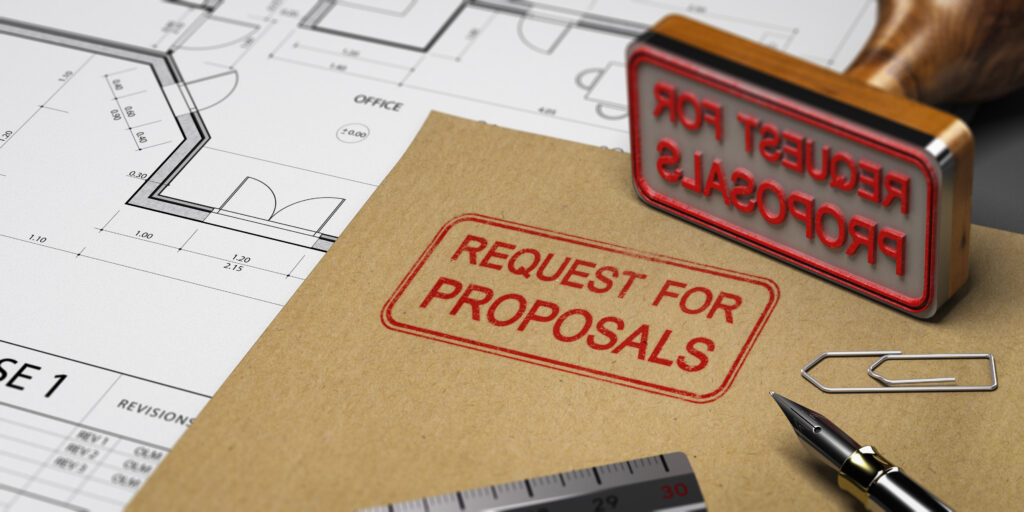We’ve been asking members who specialize in exhibition planning and production to share their perspectives on changes in their processes as a result of the pandemic. Our friends Mark Sargent at Solid Light, Louisville, KY, and David Whitemyer at Luci Creative, Lincolnwood, IL, shared tips for museums preparing Requests for Proposals (RFPs) this year along with some evergreen advice.

First, Mark offered one new consideration as a result of the pandemic:
The pandemic – and its impact on travel specifically – might cause a museum to evaluate what sorts of meetings and site visits are essential and what could be handled remotely in order to help mitigate scheduling challenges. This is especially applicable for possible “mandatory” site visits related to an RFP process over the first 2-3 months of the year.
Mark also shared some evergreen advice for your next RFP:
- Consider allowing more time to prepare the responses. A typical two week window demands that the bidding firms drop another project’s tasks to attend to it…which might feel appropriate until you imagine being in their shoes. What if it was your project’s tasks that are getting dropped for a few days while your firm goes after an RFP?
- When you compare what you requested to what was proposed, make sure the information is apples-to-apples. Do the services proposed meet your expressed needs? Do the style, format, and contents of the proposal match your specifications in the proposal?
- Be explicit about the creative deliverables you want to see and how they will be evaluated. Will proposals be evaluated based on the visuals provided? Do your stakeholders want to see sketches, computer visualizations, or something else?
- Describe your decision making process. Develop proposal evaluation criteria and clearly communicate what you’ll be looking for.
- Conduct live interviews. This is a great way for both sides to understand what it would be like to work together.
Finally, David offered a reminder of questions you are likely to get from potential bidders:
- “How Many Firms Were Invited To Submit Proposals?” If you’re in any kind of competition – a race, a college scholarship application, an award submission – it’s extremely helpful to know how many people you’re competing against. Knowing how many firms are looking at an RFP helps exhibit designers determine if they should pursue the project, and if so, how aggressively.
- “What Is Your Project Budget?” It kind of makes sense that museums are apprehensive about showing their cards and telling bidders how much money they have. But on the flip side, part of an exhibit designer’s responsibility – and what we do well – is to help museums develop the most stunning, engaging exhibitions within an established budget. Letting firms know how much money you’re comfortable spending will encourage them to develop thoughtful proposals that provide great services and strategies within that constraint.
- “Who Are The Project Stakeholders?” When exhibit design firms read your RFPs, they are, in a sense, interviewing the museum as well, trying to gauge who you are, what your organization is like, and what it might be like to work with you. They’re eager to tailor their proposals to the group who will be reviewing them, and to craft a detailed work plan around the team with whom they’ll be working.
- “What Is Your Project Schedule?” If a timeline is indicated in the RFP, a similar question might be, Is there any flexibility in your project schedule? – trying to discern if your grand opening date is etched in stone, or if there’s some wiggle room. It’s surprising how many RFPs fail to provide even the most basic schedule information: project kickoff dates and completion dates.
Related Resources:
- Time is of the Essence: 5 Ways to Keep Your Exhibit Design Project on Schedule, American Alliance of Museums blog, David Whitemyer, Luci Creative, October 2017
- 9 Tips for a Better Museum RFP Proposal, Barbara Punt, Doubleknot, March 18, 2021
- RFP Resources, American Alliance of Museums (Members Only Access)
- Processed Apples: One Museum’s Recipe for the RFP Process, Dan Bartlett, Exhibitionist, Spring 2007
